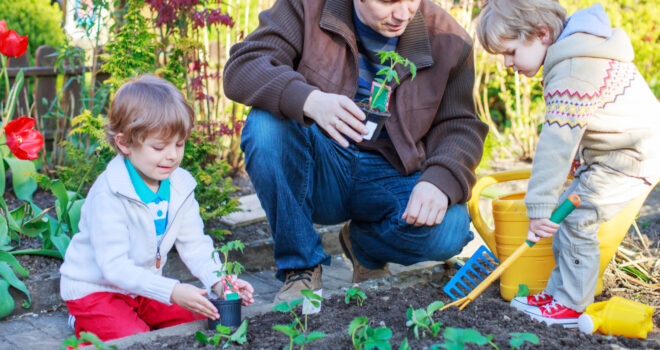A recent INRA study of the advantages of community gardens in deprived neighbourhoods in France has come up with unexpected results. The beneficial impact of an allotment on diet, even in poor households, enables us to rethink our dietary habits.
Socio-cultural factors, economic constraints or problems of access to good quality, healthy food reveal social inequalities when it comes to nutrition. Dietary concerns are not a priority in poor households. And there is a lack of fruit and vegetables in the diets of the most disadvantaged groups.
The benefits of a community allotment
Taking this hypothesis as its starting point, a team of INRA researchers analysed the benefits of a shared garden in a social housing neighbourhood in the 11th arrondissement of Marseille. 21 women were given a plot in a community allotment. The aim was to verify, by means of multidisciplinary surveys, whether these “gardeners” would provide their families with more fruit and vegetables than other women with no access to the garden. That applied to both vegetables grown in the allotment and food bought elsewhere.
Eleven of the women brought their fruit and vegetable harvests home, equivalent to an average of 53 g per person per day. This is a small amount, but the participants enjoyed other benefits that have little to do with quantity: the variety, taste and health benefits of the produce they had grown. They also reported social, cultural and symbolic benefits: their pride in producing food, cooking meals with it and sharing it at the table.
More fruit and vegetables consumed by “gardeners”
The researchers found a significant difference between food in green-fingered households and those that did not use their gardens: the former recorded 369 g of fruit and vegetables per person per day, as opposed to only 211 g per day for the latter! This difference is due to the fact that more fruit and vegetables were purchased in households with “gardeners”, and is unrelated to the quantities produced.
Despite the cross-sectional nature of this study and the small quantities harvested, the results suggest that having access to a community allotment may encourage women from socio-economically deprived backgrounds to adopt healthier eating habits, which correspond more closely to the nutritional guidelines.
Source:
https://ageconsearch.umn.edu/record/271457?ln=en
Darmon N, Martin P, Scheromm P, Ghestem F, Marchand P, Consalès JN. Des jardins partagés dans les quartiers d’habitat social : un moyen de repenser les pratiques alimentaires ? Montpellier (FRA) : UMR Moisa, 2018, 21 p. (Working Paper Moisa n° 2/2018).
Adapted from: Martin P, Consalès JN, Scheromm P, Marchand P, Ghestem F, Darmon N. Community gardening in poor neighborhoods in France: a way to re-think food practices? Appetite, 2017; 116, 589-598.



 Purslane
Purslane  Tomato
Tomato  Vegetable garden: growing carrot
Vegetable garden: growing carrot 









